57. VISITATOR 331 – 25 January, 2018
- Andrew Foy
- Jan 25, 2018
- 13 min read
Updated: Jan 20

Some random notes while traveling from Inverness to Bucharest to Sarajevo:
(Virgin Trains, Eurostar, ICE Germany, Dacia Express, Romania, Bucharest, Sighisoara, Bosnia, Sarajevo)
Unhappy passenger boarded the train at York, fussing with baggage; coat before slumping into her seat and kicking the opposite passenger in the shins. When he objected, she said:” You are SO rude!” He responded: “Well I think you are quite rude...”. After accepting coffee and sandwiches from the trolley dolly, she checked her phone, surreptitiously photographing her opposite number and uploading his image to Facebook, no doubt commenting that HE was SO rude...
On the Eurostar from London, there seemed to be some kind if Minnie Mouse convention happening with about 30 women of all ages in “mouse-ear” hats through the train. The family opposite had a 2 year old who was very excited about all this, squeaking “Minnieeee” repeatedly until it became a guttural scream “MINNEEEEEEEE!!!!!!!!!” all the way to Lille International when the mousey-eared ones left the train (for Euro Disney?). The doting parents thought this was sooooo cute. Body language of other passengers suggested otherwise, possibly contemplating infanticide (and parenticide).
The first sight after leaving the Channel Tunnel through the barbed wire security fences in Calais is a shabby shed advertising “Franglais Wine Sales”.
On the German ICE express from Brussels, whenever there was a short and unexplained halt, an outbreak of German-suits’ coughing and throat clearing occurred, worthy of a flu-ridden symphony audience between Beethoven movements. Train movement soon quietened the outbreak, but the DB website (listing connections to seemingly everywhere on the planet for every station stop) showed that train as TWO minutes late in BIG, BOLD, RED print for the rest of the journey. At 170-200 mph I dozed through miles of manicured greenery and pastel villages utterly unworried by a 2 minute deficit.
Wednesday: 2am on the “Dacia” from Vienna to Bucharest. They don’t call this train an express: it tends towards a rolling amble rather than actual speed, with the train whistle sounding like someone has stamped on two discordant cats’ tails. The sleeper is comfortable but no train catering is on offer for only 20 hours. Mandarins, dark Belgian chocolate and a rough Italian red promote sleep until... a sharp knock on the door. “Have your travel documents! Hungary BORDER!”. After a half hour staring at floodlit, icy, nothing much at all in Lokoshaza, another peremptory knock: It’s Hungarian officialdom, all efficiency, false eyelashes, large passport stamp and an eagerness to search the compartment for undocumented escapees.
A slow lurch through bleak fields and sidings of “cereale” wagons brought the “Dacia” to an shuddering halt in Curtici, Romania. Here in a wee small hours grey 1920’s frontier station from European Cold War movie central casting was more weary officialdom and questioning of why I would travel into Romania... while the two swarthy blokes in the next cabin were dealt with far more roughly with questions about how much currency they were carrying. A long sleep til 10am: waking to roll through grey sleet, huddled shepherds and mobs of brown, wet sheep across extended, cultivated plains with horse-drawn rubber-tyred wagons and farm machinery between olive-brown villages of flat metal-roofed houses, small vineyards and with covered firewood stacks in most gardens. Entry into small towns was through unrepaired smashed vehicles (road and rail) and extensive trackside rubbish and semi finished/derelict bridges going nowhere. Every small town station had its uniformed attendant standing stiffly to attention holding a red flag as the train wandered past.

Main stations are faded concrete 1960’s Communist-era constructions, with crumbling paint, fluorescent light fittings dangling loose from precast concrete canopies, large amounts of faded graffiti, broken plastic seats and “home made” additions or renovations. This was just a taste of the massed, faded, peeling tatty, graffitied Communist era apartments that dominate much of Bucharest, except for small remnants of the traditional inner city that the Ceaucescu government hadn’t quite got around to “improving”.
The last couple of hours sinuous snowy descent of the Carpathian Mountains through villages, chalets and ski fields was a spectacular entry into Bucharest.
_________________________________________________________________________________
On every journey there is always one desperately low, low, LOW point and Wednesday night in the slightly ratty Elizeu Hotel was it. Amid the cracking headache and rushes to point various orifice at porcelain (all possible combinations) which took three goes to flush (“Place used paper in the bathroom bin” - developing an impressive collection...), I was surrounded by a junior high school group of excited Romanian girlies who were doing the “squealing-while-running-down- corridors-knocking-on-doors-to-see-what-would-happen” thing. Through the nausea fug and corridor giggles and unspeakable multi-flushing bodily explosions, I sampled local TV, as one does, on the 12” 1970’s portable supplied. You will understand if recollections of this are a tad indistinct, and if I avoided the food channels with their grinning hypermanic black Romanian chefs...
Advertising: Desperate man on bus considering two plastic seats available: one has a strategically placed cactus; the other has a small fire. Dream sequence: a tube of something called SPERTI appears. Cue to man smiling and settling onto plastic seat as if it was a Smoky Dawson recliner. (Sudden rush of stomach cramps).
I guess, because of the multiplicity of languages in this part of the world, advertisers have to find an economic way to get the message out. It seems to be through a kind of visual omnibus of ads and messages in video packages with captions in the relevant language, with muzak as the soundtrack. So much better than the spoken word. (Raging clouds of nausea).
The usual collection of split-screen conflicting journalists’ panel programs in Romanian; far, far too many variety shows featuring accordions. Several channels of Chinese historic epics dubbed into one language, subtitled in another. Bing Crosby/Bob Hope “Road” movies, (Guts expanding and contracting in rueful rhythm. Rictus smiles of accordion players not improving general disposition).
The CBS Reality Channel: “Experience crimes that appalled Australia!!!!” Cue: Brisbane channel 9 reporter and the investigation of a real estate agent who dispatched his wife into a local stream. Followed by the underclass rats in front of feisty Judge Judy type. Is this a taste of our Channel 10 to come? (Gallop towards porcelain several times).
The local version of “Romania’s Got Talent” seems to be a dance-off between teams of traditional village groups in traditional costumes, judged by a multi-tatted T-shirted dude and hosted by an ebullient sky-blue “suit”. More accordions. After tripping the folkloric fantastic, the host and judge are offered baskets of traditional foods by both teams to assist their decision. Audience goes wild. (Fitful sleep).
_________________________________________________________________________________

“We See Him As A Good Guy”:
So, after a reviving mineral water breakfast, it was the “tips only” walking tour of what’s left of downtown Bucharest, starting at the 6 square kilometres of the decimated old city (to build the Communist dictator Ceaucescu’s massive Palace of Parliament memorial to himself and his wife/”the people’s” odious Elena).
Four billion Euros and a much-suppressed revolution later and the Palace is still not finished: too expensive to destroy. The dictator and the unlovely Elena were shot by their own army before the and the Party could move in. It is spectacularly, colossally awful.
The anti-Communist revolution here was a violent affair: memorials to the martyrs are around the city. Current politicians are largely the next generation of the Ceaucescu cronies. Tour guide: “not happy” as she regailed us with stories of organised murders while sharing cups of her mother’s plum hooch to warm us up in an Ottoman era Turkish Inn/Fortress linked to the Silk Road heritage of Bucharest.
What’s left of the inner city is largely 19th century French art nouveau construction and the city’s first footpaths (part of a national statement to the fading Ottoman Empire that Romania wished to look to Europe) making it historically architecturally akin to say, Victorian Melbourne or Sydney or Manchester, with Turkish influences and Greek Orthodox churches (containing religious remnants of the mass demolitions for Ceaucescu’s Palace that were surreptitiously smuggled out by workers for preservation). Ceaucescu’s project “cleared” the old Greek, Turkish and Armenian areas: residents were resettled into dire Communist apartment buildings on city fringes (even more dire and dilapidated these days) and churches, mosques, culturally important sites were just bulldozed. “Anything that did not recognise Ceaucescu’s power or impress his North Korean friends was just swept away” according to our hooch-sharing guide.
At the “crossroads” between Europe and Asia, regularly trampled by greater powers, Romanian culture survived, as has the reputation of Vlad The Impaler (the inspiration for literary “Dracula”), described by the guide as:
“a good guy who stamped out corruption and protected Romania from the Turks. The sort of man you would invite home for dinner, and offer him virgins, if that is what he would like.”
At regular anti-corruption rallies (there was one on the Saturday night of my visit in driving snow, coordinated across all main cities and simulcast on TV news channels), one protestor has taken to dressing as Vlad, carrying a sign: “Did You Miss Me?”
Much of the rest of the organised wandering was linked to commentaries about Ceaucescu’s promise to quickly repay a $10 billion loan to the World Bank, plunging Romanians into a life with a few hours heat per day, 2 hours of hot water for bathing once per week, 2 hours of state TV per night, little to buy .... whilst Ceaucescu told them they were the richest country on the planet (and was offering financial deals to the Bjelke-Pietersen government in Queensland). At this time, Communist governments were collapsing but Romanians were still feeling imprisoned in their own country. Ceaucescu’s building of infrastructure and industry are acknowledged, but it was the North Koreans that he really wanted to impress and emulate, therefore the gross Palace construction as a monument to himself in the city.
He was shot on Christmas Day: “Very Bad Karma which affects us now...”.
By this stage our eclectic “walking tour” group had started fracturing as an American loudmouth lawyer lectured everyone about how poor were the many countries he had visited: any capital was “just another big city” (this did not go down well with the Romanians and Russians) and describing the taxi drivers he’d befriended and cheated... Meanwhile, the more the guide described the ignorance and wilful reactiveness of the Ceaucescus, the more they sounded like the current inhabitants of the White House. Two young Israelis were arguing with a Swede that the Israeli army was only a “defence force” and posed no threat to other in the Middle East, the Russian guy was bemoaning the fact that he had to travel alone as “Russian has no travel culture: they stay home or stay in groups”, and the Bulgarians stayed in a chain-smoking clique. Excellent!
Following another Romanian Cultural Experience (Gloria Jeans) our walking tour finished up at the much graffitied city university. Our handing over tips was enlivened by three men shouting at the group about how corrupt Romania is, and how the army precipitated the shooting of students after the fall of Ceaucescu, and an old lady being caught trying to pickpocket our group during the distraction.
_________________________________________________________________________________
Travelling around Bucharest by tram or bus, when passing an Orthodox Church, many passengers cross themselves several times. There is a church every few blocks, so communal travel becomes quite a physical experience...
_________________________________________________________________________________

A day trip to the snowy spires of the mountain top medieval citadel of Sighisoara became a break from everything Ceaucescu. Here the birthplace of Vlad the Impaler has become a restaurant. “Would you like red wine jus with that stake”?
I resorted to an ok schnitzel and salad place down in the town, finding myself surrounded (again) by school students. These were rather more refined than my hotel fellow guests: ordering and sharing Friday afternoon pizza and coffee while waiting for parents to collect them.
_________________________________________________________________________________

Back in Bucharest, while lurking in the “lounge” (hard plastic seats) for the official tour of Ceaucescu’s gold-marble-lumpen Palace of Parliament, the Muzak was playing: “My Way”.
To get in, we were processed through Security and our passports were taken. In exchange, I became badged as VISITATOR 331, receiving dire warnings not to wander away from the group on threat of being charged for committing “illegal access to government business”. What followed was grossly spectacular, with an undercurrent to the commentary about how it was all for hire and they needed the money, and no we couldn’t gain access to the parliamentary chambers, but the breathtaking formal areas and conference rooms were quite extreme enough, thank you.
Ceaucescu never got to speak to “his people” from the balcony of his Palace of Parliament to the huge square and massive boulevard below (“10 metres longer than the Champs Elysees: very important to impress North Korean friends…
“ The first person who did speak here was Michael Jackson, saying “Hello Budapest” (!)
Following this excess, I felt the need for cleansing and sought out the Bucharest Communism Museum (“Memory as a form of Justice”) on my rather dodgy tourist map. It led me directly through the Art Nouveau old city centre to the steps of the Vietnamese Embassy. Was this dark Romanian irony?
My taxi driver to the Airport was very keen to impress on me the need to return to Romania. “You must go to Constanza on the Black Sea. No sharks. Very important for you Australians!”
_________________________________________________________________________________
Austrian Airlines to Sarajevo via Vienna: one could come to detest the “Blue Danube Waltz” which is played repeatedly as the welcome/panic/arrival music on every plane (and as the “hold” music when you call their “help” line). Actual service is nowhere near as rhythmic, classical or elegant. They got me there and didn’t lose the bag. Being de-iced by a bloke in a cherry-picker squirting yellow chemical gunk over the wings of the plane in heavy snow at Bucharest airport was the interrresting highlight.
Sarajevo Airport: about the size of that in Newcastle NSW: off the plane, walk the sunny zero-degrees tarmac straight into Immigration, grab bag and out the door in 10 minutes.
_________________________________________________________________________________
“Where logic ends, Bosnia begins,” is the ascerbic comment of my transfer driver from Sarajevo Airport into the city as we progressed along ‘Snipers’ Alley’ where the burned out remains of an old people’s home and the battered Communist era apartments evidenced pock-holed walls and rough brick infills where mortars from the surrounding mountains had blasted gaping holes.
After the siege from 1992 to 1996 you are always aware of the surrounding mountains lining the north and south of the narrow valley, and their clear sight lines along north-south streets and across the width of the main east west-avenue which was the site of potshots and years of shootings and stranded, strafed, bombed out trams under tangled, collapsed wires. (The day that the tram service restarted after the siege, using donated/second-hand vehicles from eastern and western Europe, made international headlines as a symbol that life in Sarajevo was haltingly returning to something approaching normality).
My transfer driver regailed me with stories of the complex political arrangements which brought the war to an end: six political entities in the nation of Bosnia-Herzegovina: some ethnic/religious, others “mixed”, with “more politicians than Germany for a fraction of the population. They keep squabbling, nothing improves, and we have a brain drain...” It was a frequent refrain: people list their school friends who are scattered across the world and the short and long term destruction of families. “I do not go to the mosque, but I have a Muslim name. Just because of your name, you could face detention or far, far worse until we had peace. For centuries in Sarajevo, people from all religions lived together in peace. Then the war from collapsing Yugoslavia hit...” “They tell us: you are Muslim or you are Catholic or you are Orthodox. I say: I am BOSNIAN. You are BOSNIAN. We live in BOSNIA. They do not listen or like this.”
So that was just the airport transfer...
“After being initially besieged by the forces of the “Yugoslav People's Army”, Sarajevo was besieged by the Army of “Republika Srpska” from 5 April 1992 to 29 February 1996 (1,425 days) during the Bosnian War through which the Serbs attempted to extend their territory and influence and religion following the collapse of the Yugoslav state. ... A total of 13,952 people were killed during the siege, including 5,434 civilians.” - Wikipedia: Sarajevo Siege.
_________________________________________________________________________________

The "tips only" City Walking Tour commences across the road from the site of the assassination of Archduke Ferdinand and Sophie. After a potted history of the Ottomans "selling" Bosnia to the Austro-Hungarian Empire (cue: industrialisation, European architecture, the first electric trams in Europe - a trial run in the provinces before bringing them to Vienna...) and a wander to the rebuilt national library which is now the City Hall: "the building and books burned for a week. We cannot replace the books...", as well as the mosque, madrasa, Orthodox church and Sacred Heart Cathedral and the physical dividing line between Ottoman and Austro-Hungarian architectures, we arrived at a "Sarajevo Rose". This is a metre-square concrete moulding on the pavement which is a red painted blood-splatter design: a memorial to a site where 3 or more people perished in a mortar attack. There are more than a hundred of these throughout the city.
While this was being explained by our keen young guide-for-tips, an old ma on a walking stick paused, greeted the guise, then described how he was injured by a sniper whole carrying plastic containers to the brewery which was the only source of drinking water (ironic in a largely Muslim city)after the Serb forces cut off the city water supply.
I came for the history: this was just the first three hours...
“During the 20th Century Sarajevo has lied within six countries and it was the stage for the Sarajevo Assassination and events of WWI and WWII, the Winter Olympic Games and the longest-running siege of any city in modern history.”
- City Tourist Guide (possibly in need of an update given more recent events in Syria...)
_________________________________________________________________________________
Next morning through heavy snow: a local driving tour covering the impact of the collapse of Yugoslavia by an enthusiastically shouty tour guide (his shameless image appears in publicity across the city in the company of Bill Clinton) with me as his sole “shoutee” in too small a car: football fields (now war graves) and the Winter Olympics site.
“In the Winter Olympics we were one big enthusiastic community in 1984: eight years later it was all destroyed...”. The bombed out Children’s Hospital: boarded up and left as a memorial to siege victims, the city park monument to 11,000 children who perished in the siege, the hope (false) that the EU and NATO and UN would effectively and quickly intervene and the hand-dug tunnel under the UN administered airport which the Bosnian army used as the only physical connection to the outside world. The UN ration packs air-dropped during the siege contained rancid bully beef, possibly dating back to WWII. Recipients were deeply unimpressed.....
My shouty guide has recently split with his Russian girlfriend. He says that she would not have been “a problem” in pre-siege Sarajevo, but now his mother will not tolerate a “Slav” in the family, and his friends kept calling him a “Serb”, so it had to end...
A 10 minute drive brings us to the end of the trolley bus lines at the line-on-a-map border with “Republika Srpska”: one of the six “entities” making up the modern “Bosnia Herzegovina”. Suddenly the road signs are Cyrillic. The image of Slobodan Milosevic (convicted in The Hague for Crimes Against Humanity) is strung in posters across main roads as a national hero. (“10,000 missing persons and so they do THIS!”) It is not the Bosnian flag which is displayed, but a Serb tricolour banner (which “does not represent the other minorities living in Bosnia” according to the Constitutional Court). No stopping for photos until we reach the mountain sites of army emplacements to experience the snipers’-eye view of downtown Sarajevo, and the vandalised Winter Olympics bobsled course.
Peace reigns in Bosnia-Herzegovina, but the toxic, divisive politics remain, now embedded into the structure and fabric of the state.
“Where logic ends, Bosnia begins...”

#UK #TrainTravel #Food #Belgium #Germany #Yugoslavia #Hungary #Romania #Austria #BosniaHerzegovina #History














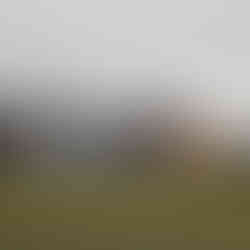





















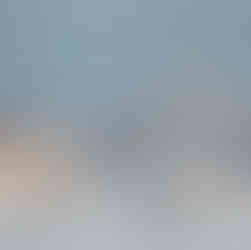










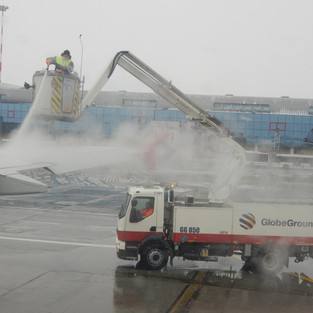







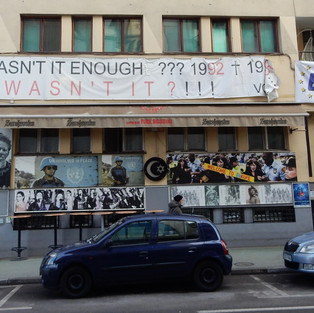






















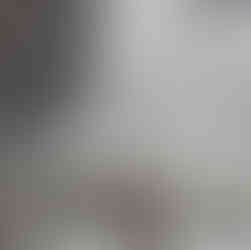






Comments